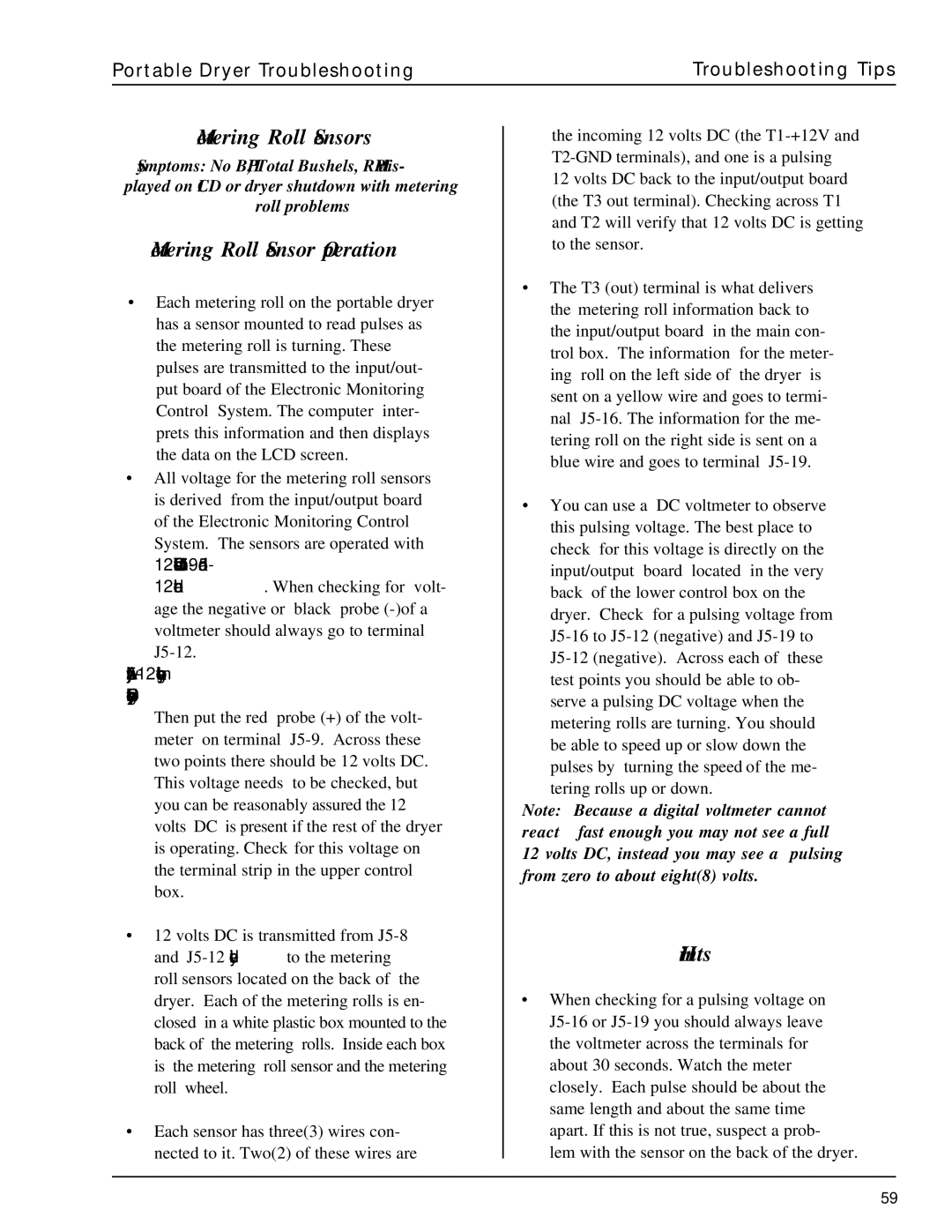
Portable Dryer Troubleshooting | Troubleshooting Tips |
Metering Roll Sensors
Symptoms: No BPH, Total Bushels, RPM dis- played on LCD or dryer shutdown with metering roll problems
Metering Roll Sensor Operation
•Each metering roll on the portable dryer has a sensor mounted to read pulses as the metering roll is turning. These pulses are transmitted to the input/out- put board of the Electronic Monitoring Control System. The computer inter- prets this information and then displays the data on the LCD screen.
•All voltage for the metering roll sensors is derived from the input/output board of the Electronic Monitoring Control System. The sensors are operated with
12 Volts DC from terminals
age the negative or black probe
Always use
Then put the red probe (+) of the volt- meter on terminal
•12 volts DC is transmitted from
•Each sensor has three(3) wires con- nected to it. Two(2) of these wires are
the incoming 12 volts DC (the
12 volts DC back to the input/output board (the T3 out terminal). Checking across T1 and T2 will verify that 12 volts DC is getting to the sensor.
•The T3 (out) terminal is what delivers the metering roll information back to the input/output board in the main con- trol box. The information for the meter- ing roll on the left side of the dryer is sent on a yellow wire and goes to termi- nal
•You can use a DC voltmeter to observe this pulsing voltage. The best place to check for this voltage is directly on the input/output board located in the very back of the lower control box on the dryer. Check for a pulsing voltage from
be able to speed up or slow down the pulses by turning the speed of the me- tering rolls up or down.
Note: Because a digital voltmeter cannot react fast enough you may not see a full 12 volts DC, instead you may see a pulsing from zero to about eight(8) volts.
Hints
•When checking for a pulsing voltage on
59
